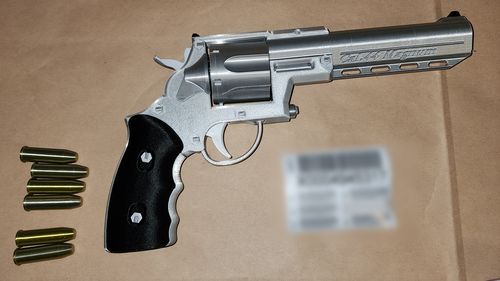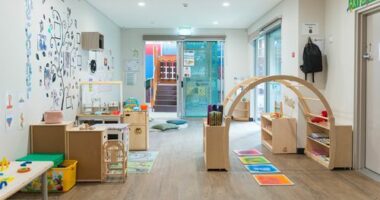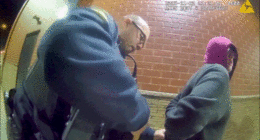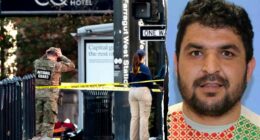Share this @internewscast.com
Authorities have issued a stern warning about the “real threat” posed by a growing influx of high-quality, powerful homemade and 3D-printed firearms entering Australia.
An extensive operation, spearheaded by the Australian Border Force and involving agencies from every Australian state and territory, as well as New Zealand, culminated in a week-long campaign targeting illegal firearms nationwide.
According to ABF Commander Graeme Campbell, this initiative resulted in 184 arrests and 854 charges being filed across the country.

The crackdown led to the confiscation of 719 complete firearms, 489 firearm components, 64 imitation guns, and 281 privately manufactured or 3D-printed firearms and parts.
Campbell noted that a significant portion of these homemade and 3D-printed weapons and parts were intercepted at the border, originating from a wide array of international sources.
In New South Wales alone, law enforcement executed 20 search warrants between October 13 and October 19.
In total, 45 people were arrested, 206 charges laid, and 270 guns seized.

Police also collected 89 gun parts, 19 imitation guns, 10 home-made or 3D-printed guns and 130 home-made or 3D-printed gun parts.
The home-made firearms were a major focus of the operation, and were involved in some of the biggest busts.
Just before 7am on Monday, October 13, police carried out a search warrant in Hinchinbrook, Sydney, where they allegedly found a 3D printer attempting to print a gun part.

Officers also allegedly seized numerous other firearm parts, electronics, and crypto-currency wallets.
A 41-year-old man was arrested at the scene and charged with multiple firearm-related offences.
The next day, on Tuesday, October 14, in a search warrant in Gosford north of Sydney, police seized another 3D printer and three home-made Glock-style pistols, magazines, holsters, and other items.

A 52-year-old man was arrested and charged with 14 gun-related offences.
NSW Police Detective Superintendent John Watson said the quality of the guns was increasing and newer models had displayed semi-automatic and high-powered capabilities.
“Privately manufactured firearms present a fast-evolving challenge, but this operation shows what’s possible when agencies collaborate effectively,” he said.

Watson said many people who were involved in 3D-printing guns and gun parts may not even be aware they were breaking the law, and that they were more interested in the technology.
Others may be licensed firearm holders with an interest in the guns.
Watson said a public education campaign was needed to warn such people away from printing or privately manufacturing guns, which is highly illegal, even if the weapon is non-functioning.

He said police wanted to focus on “the real threat” of the guns in the hands of organised crime and outlaw motorcycle gang elements.
And he said there was “no question” so-called sovereign citizens and “doomsday preppers” were making use of the technology.
”The threat is real. The threat is right across Australia,” he said.













